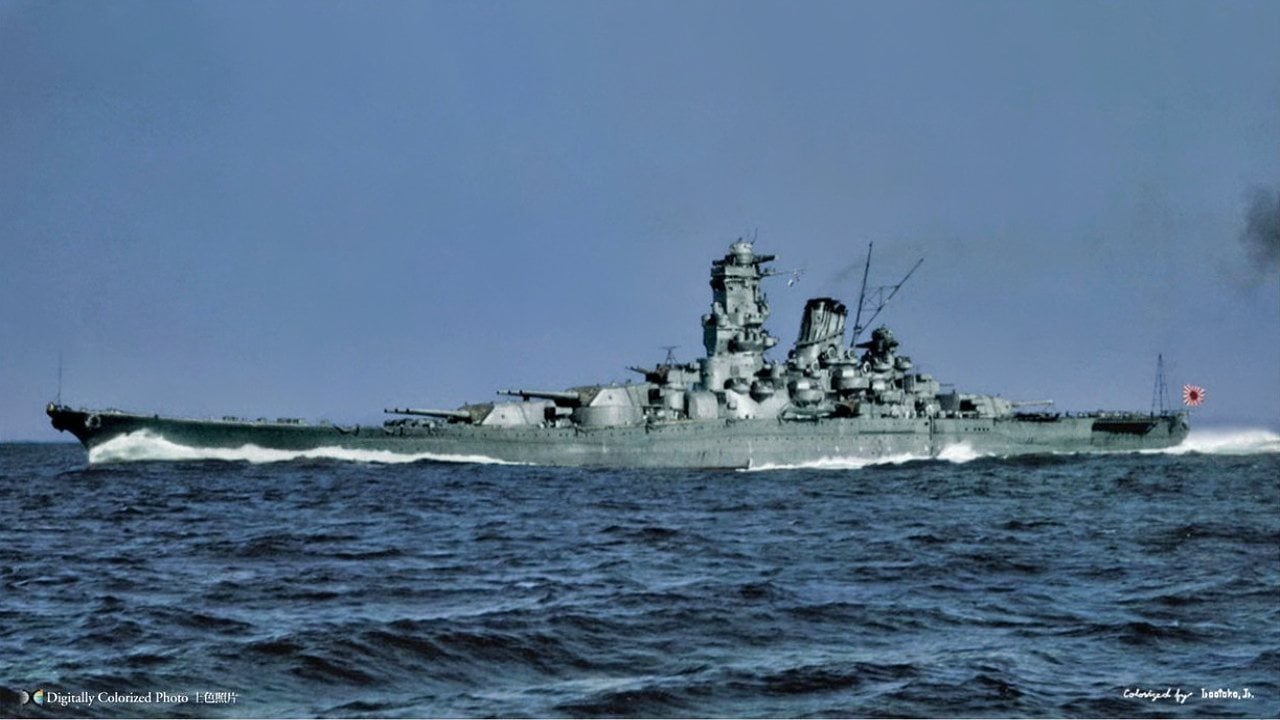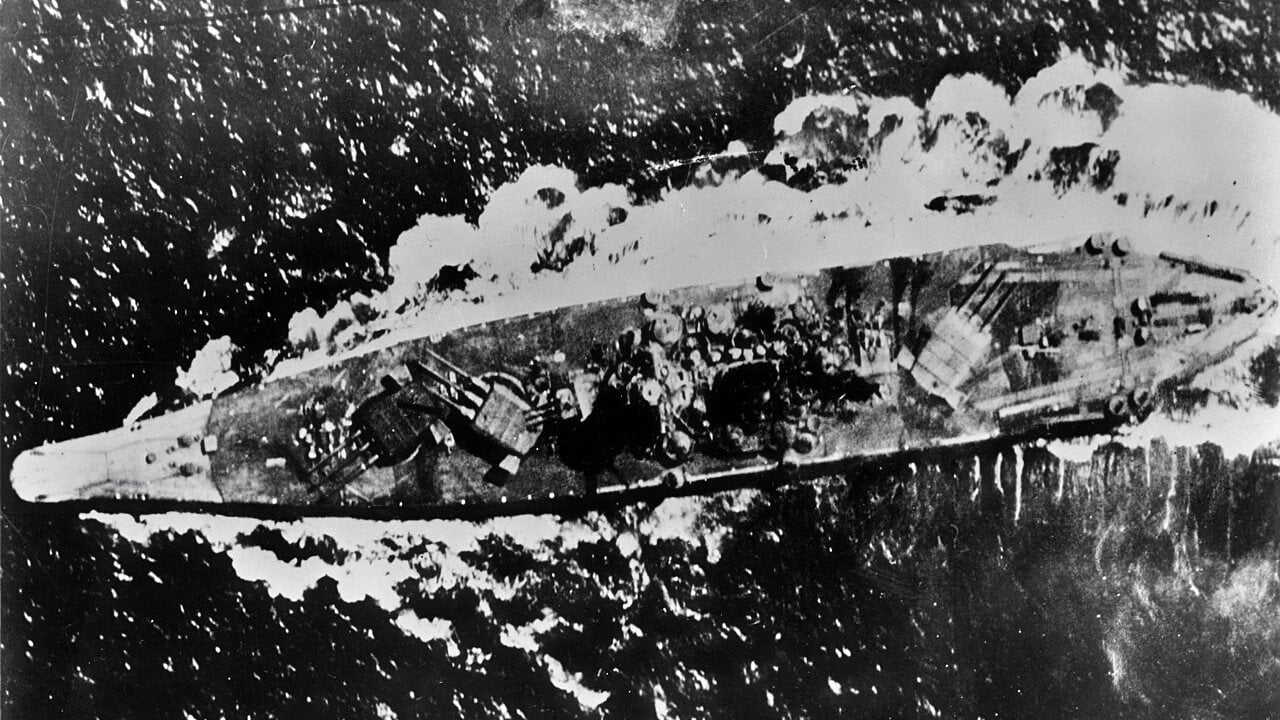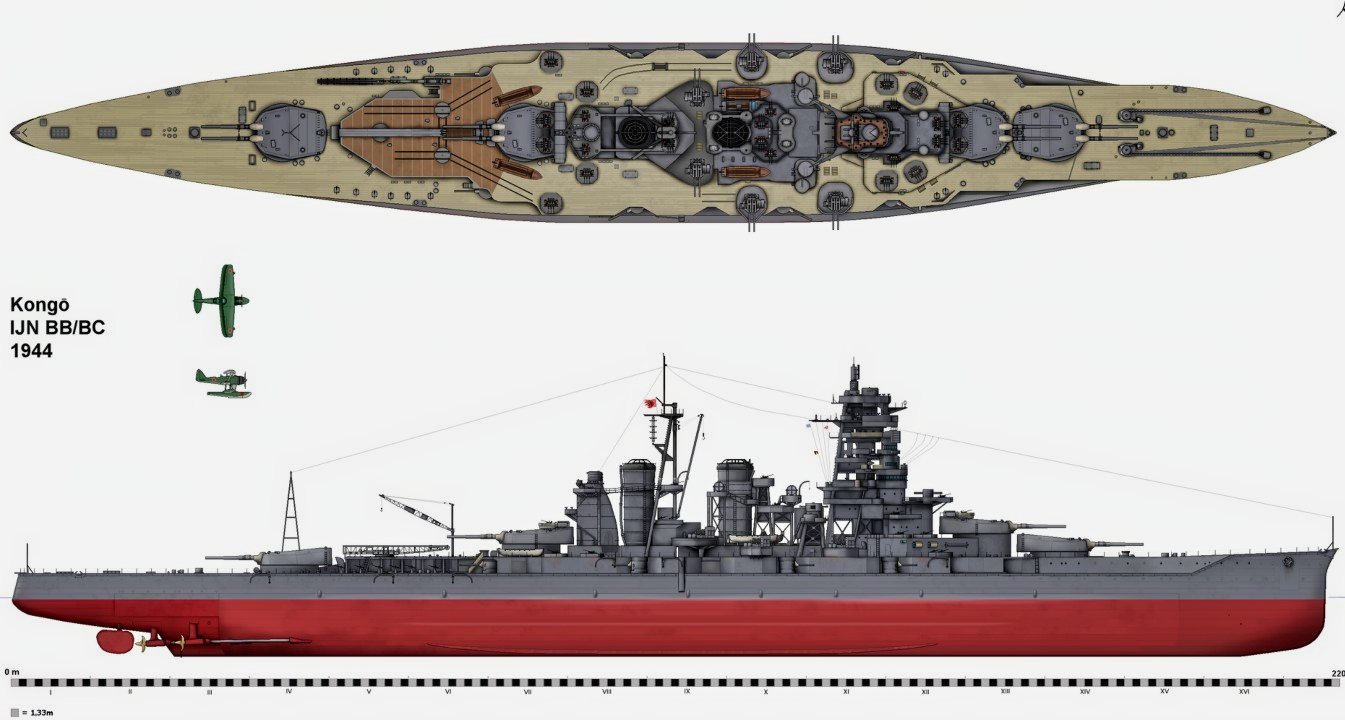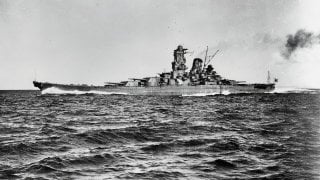Japan's 4 Most Powerful World War II Battleships
The Pacific Theater of World War II highlighted the importance of naval power, with Japan fielding several notable battleships before the dominance of aircraft carriers. Among Japan’s World War II battleships, four stand out.
The Pacific Theater of World War II was a high-stakes naval engagement notable for its island-hopping and amphibious nature. Both belligerents, Imperial Japan and the United States, fielded capable and varied vessels. And while the aircraft carrier emerged from the conflict as the hallmark naval vessel of the postwar era, the conflict began with the battleship as the preeminent naval vessel.

Let’s take a closer look at the battleships on the losing side and select the top four of Japan’s eight World War II battleships.
Nagato
The Nagato was laid down in 1917 and completed in 1920—and represented the super-dreadnought style that was so common in the early twentieth century. Named for the Japanese province of Nagato, the Nagato battleship was fairly large, measuring 708 feet long with a 95-foot beam. The Nagato was outfitted with firepower to match her size, boasting eight 16-inch guns that could fire two rounds per minute at a range in excess of 40,00 yards.
One of the more distinctive features of the Nagato was the incorporation of aircraft, which could operate at different times from either a catapult or a boom that lowered the floatplanes into the water. Of course, aircraft are more commonly associated with the aircraft carrier (naturally), but the Nagato operated planes like the Mitsubishi F1M, Kawanishi E7K, and Nakajima E4N2.
The Nagato survived World War II, but shortly thereafter, was selected as a target ship for Operation Crossroads—an American test of nuclear weapons at Bikini Atoll. An underwater nuclear explosion caused Nagato to list, eventually capsize, and sink. Today, Nagato is a famed wreck site for scuba divers.
Yamato
Like the Nagato, the Yamato was named after a Japanese province. And while the Nagato was moderately large and heavily armed, the Yamato was an absolute behemoth. In fact, the Yamato is the largest battleship ever built. Consider the Yamato’s hulking specs: 862 feet long; 127-foot beam, 36-foot draft; 70,500-ton displacement; twelve boilers; and a crew of 3,233 sailors. The Yamato was pushing the size of a modern supercarrier, yet was built in 1937, just in time for Imperial Japan’s push to dominate the Indo-Pacific.

The Yamato was not only the largest battleship ever constructed, it was also the most heavily armed with a wide variety of weapons, including 18-inch guns; 6-inch guns; 5-inch DP guns; 1-inch AA guns; and anti-aircraft machine guns. The Yamato was brimming with weaponry. Still, the massive vessel was sinkable, going down during Operation Ten-Go in 1945, the victim of American planes.
Ise
The Ise was modest in size relative to the Nagato and Yamato, measuring just 683 feet and displacing just 37,000 tons. The Ise was laid down in 1915, making her somewhat dated by the time Imperial Japan began its aggressive outward expansion in the 1930s. The Japanese, recognizing the Ise’s shortcomings, retrofitted her in the 1930s, adding a pagoda-style mast and torpedo bulges to improve the vessel’s survivability in hostile waters.
When the Japanese lost four aircraft carriers at the Battle of Midway, the Ise was converted into a makeshift aircraft carrier. Carrying Yokosuka D4Y Suisei dive bombers and Aichi E16A reconnaissance planes, the Ise did successfully launch aircraft during World War II. Yet, like the aircraft carriers she was converted to replace, Ise was sunk in an air attack. After the war, Ise was scrapped where she was ruined, near Kure.
Kongo
The interesting part about the Kongo is she was not Japanese in origin. Rather, British engineer George Thurston built the Kongo—in Britain. The arrangement seems odd now, knowing how the Kongo was used, against the Allied interest of which the British were so foundational. But in 1911, when the Kongo was ordered and laid down, the British had no reservations about making a battleship for the Japanese Navy.

While other Japanese battleships of the World War II era were renowned for their size and/or firepower, the Kongo was known for her speed. Capable of reaching 30 knots, the Kongo relied on steam turbines for propulsion.
Despite the Kongo’s speed, and despite the Kongo’s British design, she fell to American torpedoes about 55 miles northwest of Keelung, Taiwan.
About the Author: Harrison Kass
Harrison Kass is a defense and national security writer with over 1,000 total pieces on issues involving global affairs. An attorney, pilot, guitarist, and minor pro hockey player, Harrison joined the US Air Force as a Pilot Trainee but was medically discharged. Harrison holds a BA from Lake Forest College, a JD from the University of Oregon, and an MA from New York University. Harrison listens to Dokken.
All images are Creative Commons.


